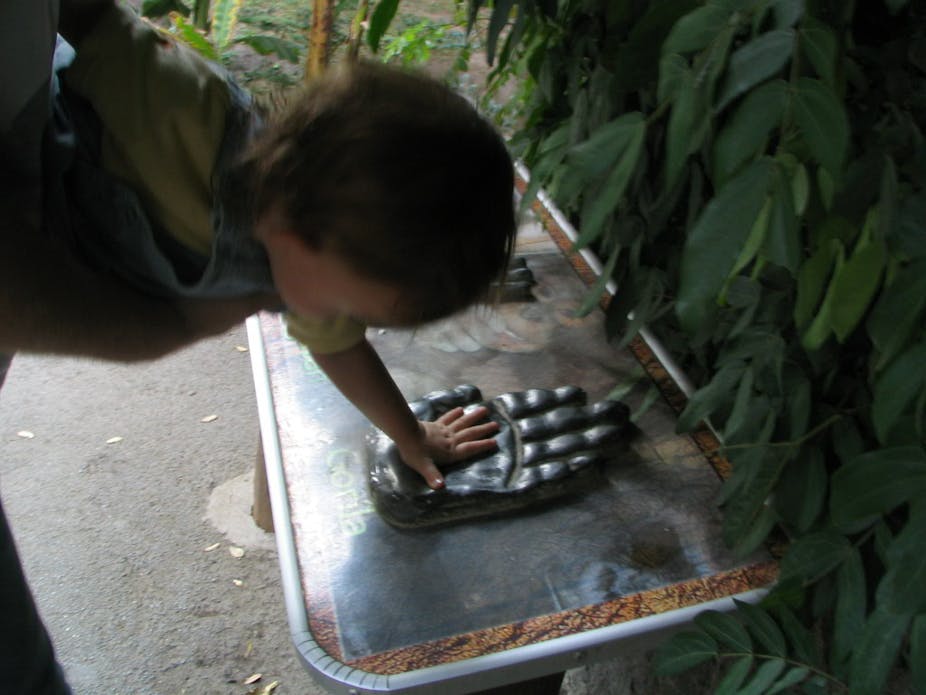Why does it take so long for human children to grow up? A male chimp and male human, for example, both end up with the same body weight but they grow very differently: at year one the human weighs twice that of the chimp but at eight the chimp is twice that of the human. The chimp then gains its adult weight by 12 – six years before the human. A male gorilla is also a faster growing primate – a 150kg male gorilla weighs 50kg by its fifth birthday and 120kg by its tenth.
Clues to the answer can be found in the young human brain’s need for energy. Radioactive tracers allow scientists to measure the glucose used in different areas of the brain but this procedure is only used rarely when it is justified by investigating neurological problems. However, the few cases we do have reveal how radically different the childhood brain is from that in adults or infants.
From about the age of four to puberty, the young brain guzzles glucose – the cerebral cortex, its largest part, uses nearly (or more than) double that used earlier or later in life. This creates a problem. A child’s body is a third of the size of an adult but its brain is nearly adult sized. Calculated as a share, a child’s takes up half of all the energy used by a child.
Brain energy use and body size
Map child growth against what is known about brain energy consumption and they shadow in a negative way: one goes up, the other down. The period in which the brain’s need for glucose peaks happens just when body growth most slows. Why? In a recent study in the Proceedings of the National Sciences, I proposed that this prevents a potential conflict over blood glucose that might otherwise arise between brawn and brain.
A young child has at any moment a limited amount of glucose in its blood circulation (3.4g – the equivalent in weight to about three Smartie sweets). Fortunately a child’s liver can quickly generate glucose, providing other organs do not compete against the brain for the glucose. But as French child exercise physiologist Paul Delamarche noted:
Even at rest, it would appear to be difficult for children to maintain blood glucose concentration at a steady level; an immaturity of their gluco-regulatory system would seem to be likely, therefore causing a delay in an adequate response to any stimulus to hypoglycemia like prolonged exercise.
Organs elsewhere in the body fuel themselves with energy sources that do not compete with the brain such as fatty acids. But skeletal muscle can compete when exertion is intense and sustained.
In adults, the liver quickly ramps up its generation of glucose so even active brawn does not usually compete against the brain. But conflict can arise even in adults, and it could pose a real threat to children. Luckily they do not let it happen: they stop exertion if it gets intense and sustained. Not that this makes children inactive – they do even more low and moderate exercise than adolescents and adults.
So putting a break on growth in childhood aids limiting skeletal muscle as a potential glucose competitor to the brain. And not only are their bodies smaller but they contain (as a percentage of their bodies) less skeletal muscle than in adults. And even that skeletal muscle, some research suggests, is of a type that uses less glucose than in active adults.
So human growth rate negatively shadows increased energy use in the child’s brain. An interesting fact – but does it tell us more? Neanderthals and other earlier species of humans developed brains as big as ours. Why did they not survive? Bad luck? Competition from our species? Or has an overlooked advantage arisen in our evolution that puts us apart? Neanderthals grew up faster than us, and this suggests, given the link between a child brain’s energy guzzling and slowed growth, a new story.
It’s the connections that count
Bigger brains may be smarter brains but they might be even smarter if their connections got to be better refined in brain development. Neuro-maturation involves an exuberance of synapses – the connectors between neurons. This initial excess lets the developing brain refine down connections, to “wire” itself in the most effective and efficient manner. Connectone research, which studies this process – both theoretically and empirically – links better efficiency of connectivity to improved cognitive ability.
Synapses are the primary energy consumers within the brain and it is their exuberance that causes the child’s brain to use so much extra energy. We cannot directly see how long this period lasted in earlier humans but we can indirectly from their pattern of growth. Since this was faster than in us we can infer that they lacked – in spite of having brains as large as ours – the extended period of connectivity refinement that we have. This means they also lacked our extraordinary capacity for complex cognitions.
This not only resulted in us displacing them but also the creation of civilisation and the complex lives we each now live.

